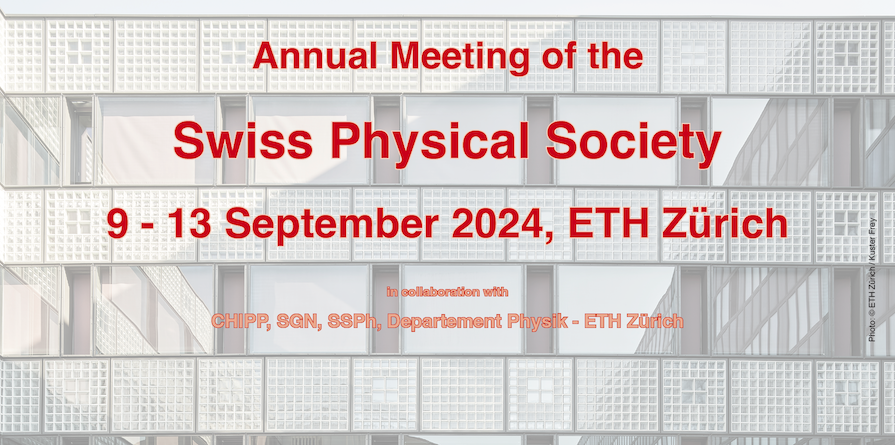In this talk, I will discuss our work on using models inspired by natural language processing in the realm of quantum many-body physics. I will demonstrate their utility in solving ground states of quantum Hamiltonians, particularly for ground states of arrays of Rydberg atoms on the Kagome lattice. Our findings highlight the potential of using language models to explore many-body physics on...
Much of the current push in quantum technologies relies on one assumption: Quantum mechanics is valid for complex and macroscopic systems. Although recent experiments have demonstrated the entanglement of mesoscopic objects, there are some aspects of quantum mechanics that are yet to be tested beyond the few-atoms level. We observed for the first time the famous Einstein-Podolsky-Rosen paradox...
Quantum synchronization occurs in systems of quantum limit-cycle oscillators that are stabilized by both gain and damping processes. Single maxima (1:1/in-phase locking) emerge in (a) the phase probability distribution of a quantum oscillator if it is driven externally or (b) in the distribution of the relative phase of two coupled oscillators. If the gain and damping rates are equal,...
Quantum backflow (QB) is a counterintuitive phenomenon where a particle's probability density moves against its momentum. Despite being first recognized three decades ago, QB remains largely unexplored, presenting theoretical and experimental challenges. QB still awaits its inaugural experimental observation. In my talk, I will present novel theoretical insights into QB within circular...
The transport properties of strongly interacting fermionic systems can reveal facets of their unknown nature, but experiments and theory have mostly focused on the hydrodynamic limit. However, a ballistic channel connecting two superfluid reservoirs of unitary Fermi gases can reach a far-from-equilibrium regime where particle and entropy currents respond nonlinearly to biases of chemical...
Nonreciprocal interactions between two agents, A and B, indicate that A exerts an influence on B different from the influence that B exerts on A. For instance, A may chase B which in turn runs away from A.
We present a quantum model of two spin species that interact in a nonreciprocal way. One species tends to synchronize in phase with the other species which in contrast tends to synchronize...
Gottesman-Kitaev-Preskill (GKP) states, also known as grid states, can encode a logical qubit into a quantum harmonic oscillator. Motional modes of a trapped ion are naturally accessible harmonic oscillators. They have coherence times of tens of milliseconds, and can be controlled by their coupling to the electronic degree of freedom of the ion. This enables the preparation and readout of GKP...
Lithium niobate-on-insulator is a photonic platform gaining interest due to its wide transparency range, strong second-order nonlinearity and large electro-optic bandwidth. While lithium niobate photonics has made a significant impact in high-speed classical communication, its potential in quantum communication, particularly in entangled quantum key distribution, remains largely untapped....
Molecules are quantum systems of prime significance in a variety of contexts ranging from physics over chemistry to biology. In spite of their importance, the development of quantum technologies for molecules has remained a long-standing challenge due to their complex energy-level structures. Trapped molecular ions are particular attractive in this context as it is possible to observe,...
Precision measurements in the H atom play an important role in atomic physics and are used to determine the Rydberg constant R∞ and the proton charge radius rp. In 2010, measurements in muonic hydrogen indicated that the values of R∞ and rp determined from H-atom spectroscopy at low principal quantum number (n < 13) might be in error by several standard deviations, a discrepancy known as the...
Recent progress with optical tweezer arrays has shown that Ytterbium-171 has several favorable features for quantum computing and entanglement generation. The naturally two-level nuclear spin qubit is highly robust in both the ground electronic state (1S0) and metastable clock state (3P0), due to a lack of hyperfine coupling in J=0 states. Recently, we also have demonstrated mid-circuit...
A principal limitation of current experiments employing methods based on cavity quantum electrodynamics lies in the fixed nature of the mode structure of the cavity field. This forces applications to trade between spatial resolution and enhanced sensitivity.
Here, we demonstrate a new single-axis cavity-microscope device, capable of controlling in space and time the atom-light coupling in a...
Beyond their main purpose of state-of-the-art frequency dissemination for atomic physics, phase-stabilized fiber-optic networks promise versatile applications as environmental sensors, in particular for seismology. Here we present how such a fiber network can be exploited as an earthquake sensor. We analyze the phase correction signal on a 126 km long fiber leg connecting METAS in Bern to the...
The study of collective excitations is a powerful tool to gain insight into a many-body system. By examining the low-lying energy spectrum, we can identify imminent phase transitions and understand the nature of the different phases. In our experiment, we load a Bose-Einstein Condensate (BEC) into a high-finesse cavity. The BEC-cavity coupling produces long-range interactions, which can result...
